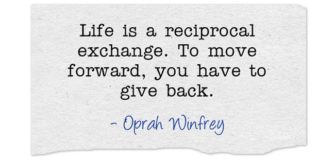Give to Get: The Need for a New Acquisition Model
 Mail list rental and exchange is diminishing in effectiveness.
Mail list rental and exchange is diminishing in effectiveness.
How can we tell?
There’s the anecdotal: the number of people requesting no rental or exchange in feedback surveys is rising. And many charities are seeing their acquisition results wane.
There’s the studied: researchers looked at people who get more charitable mail solicitations in a study called (I’m not making this up) “Defensive Responses to Charitable Mail Solicitations.” They found those folks are more likely to:
- Write down when they gave to a charity last
- Find out when last they gave before donating
- Limit their giving to charities of a certain type
- Put the “maybe” solicitations in a box or pile for later reference
- Agree with the statement “I feel I must protect myself from the mail I get from charities.”
In short, they are less likely than previously to respond to new organizations.
And there’s the rubber-means-road reality. From 2016 to 2017, new donors dropped 19% according to the Fundraising Effectiveness Project. From the first three quarters of 2017 to the first three quarters of 2018, they dropped another 7.6%.
Since I started in fundraising, it’s been an article of faith that it is easier to get someone who donates to care about your cause. This may no longer be true. It may now be easier to get someone who cares about your cause to donate. Or, at least, that day is approaching.
We see evidence for this already. Researchers have found that asking for something other than money can cause someone to give more money in the long-term (called the time-ask effect).
I am not saying that we should abandon rental and exchange. If trees bear fruit (even if it’s less than before), plant trees and pick fruit. But it’s time to get more tools in our toolkit.
What we’re talking about here is reciprocity – giving to get. Not the magnet-window-cling-T-shirt-address-label-coin-pen-luggage-tag-backpack-sticker-et-cetera premium-based reciprocity. We’re going to be giving another type of value – something that fits a need your prospective constituent has.
A simple version of this is alumni or those who have been served by an organization. Take hospital patients. As long as you can ask them immediately after their stays, you can have a 1-1.5% response rate (which I’m guessing beats your cold list acquisition handily). (Higher ed alumni, of course, are an exception, as they often must first pay back the money they used to become alumni before donating.)
This need not be a traditional service. I’m an Autism Speaks donor because, ten years ago when my daughter was first diagnosed, their 100 Day Kit helped us figure out which way was up.
I remember one of my most successful non-year-end, non-matching-gift online fundraising campaigns wasn’t a fundraising campaign. It was an advocacy ask, popular among our email file, with an ask to support our advocacy efforts after the constituent took the action alert. We weren’t giving anything to the constituent other than the opportunity to be helpful in a fight in which they totally believed.
But this reciprocity decays quickly. So it’s incumbent upon us to have our identities foremost in our minds and our journeys mapped before we begin acquisition.
We’ll talk more about these approaches this week. On Wednesday, we’ll talk about creating value exchanges that fit with your donor’s identities. Then on Friday, we’ll talk about some examples of organizations that are already increasing their results and donor files with the principles of value exchange.
Nick



Nick- thanks for this perspective, I really needed it! I look forward to the rest of the series.